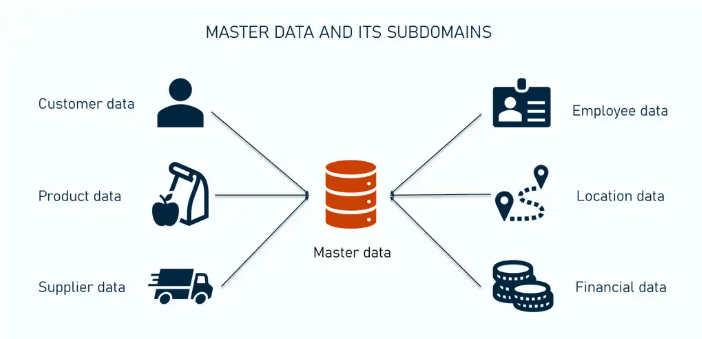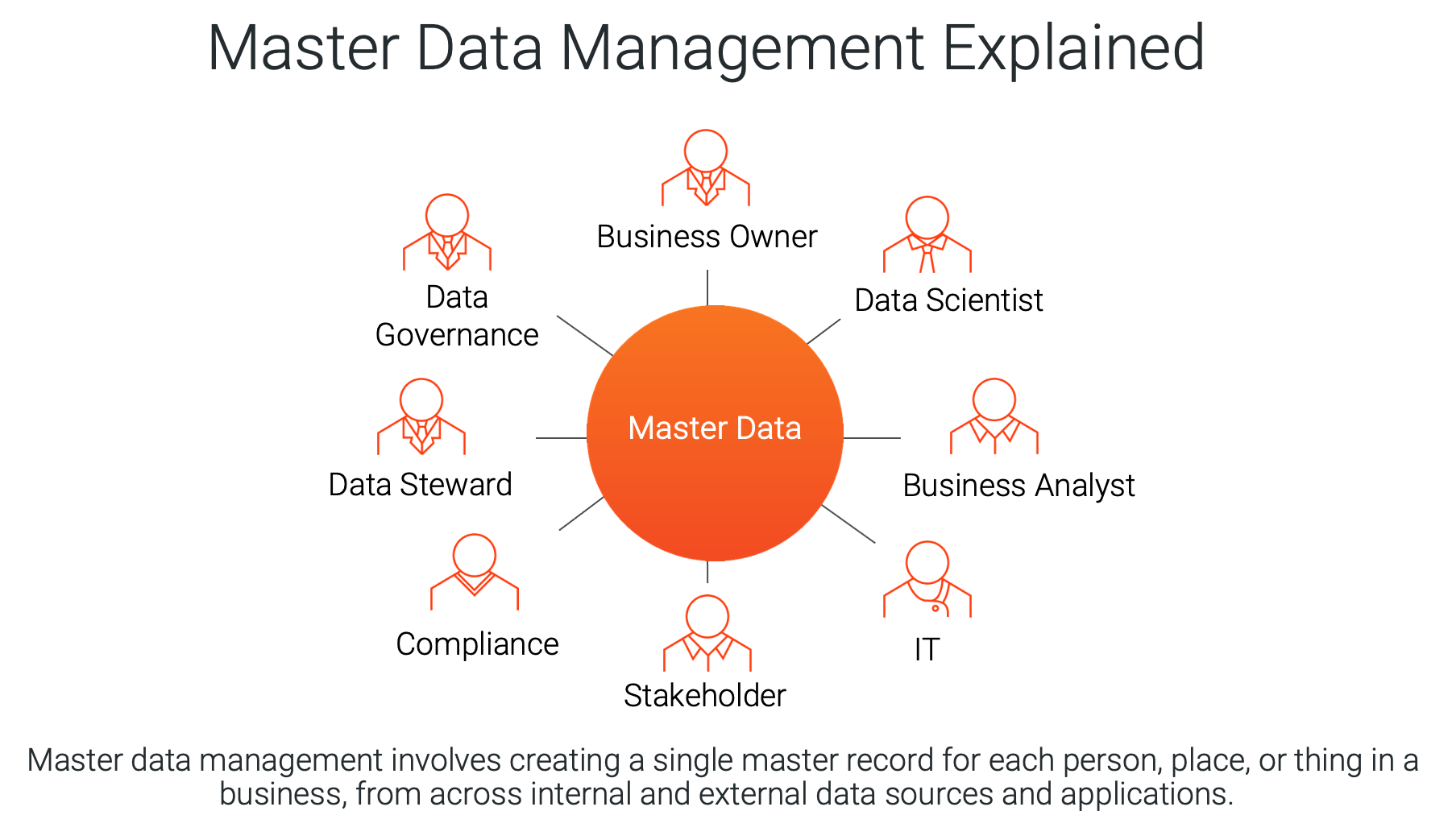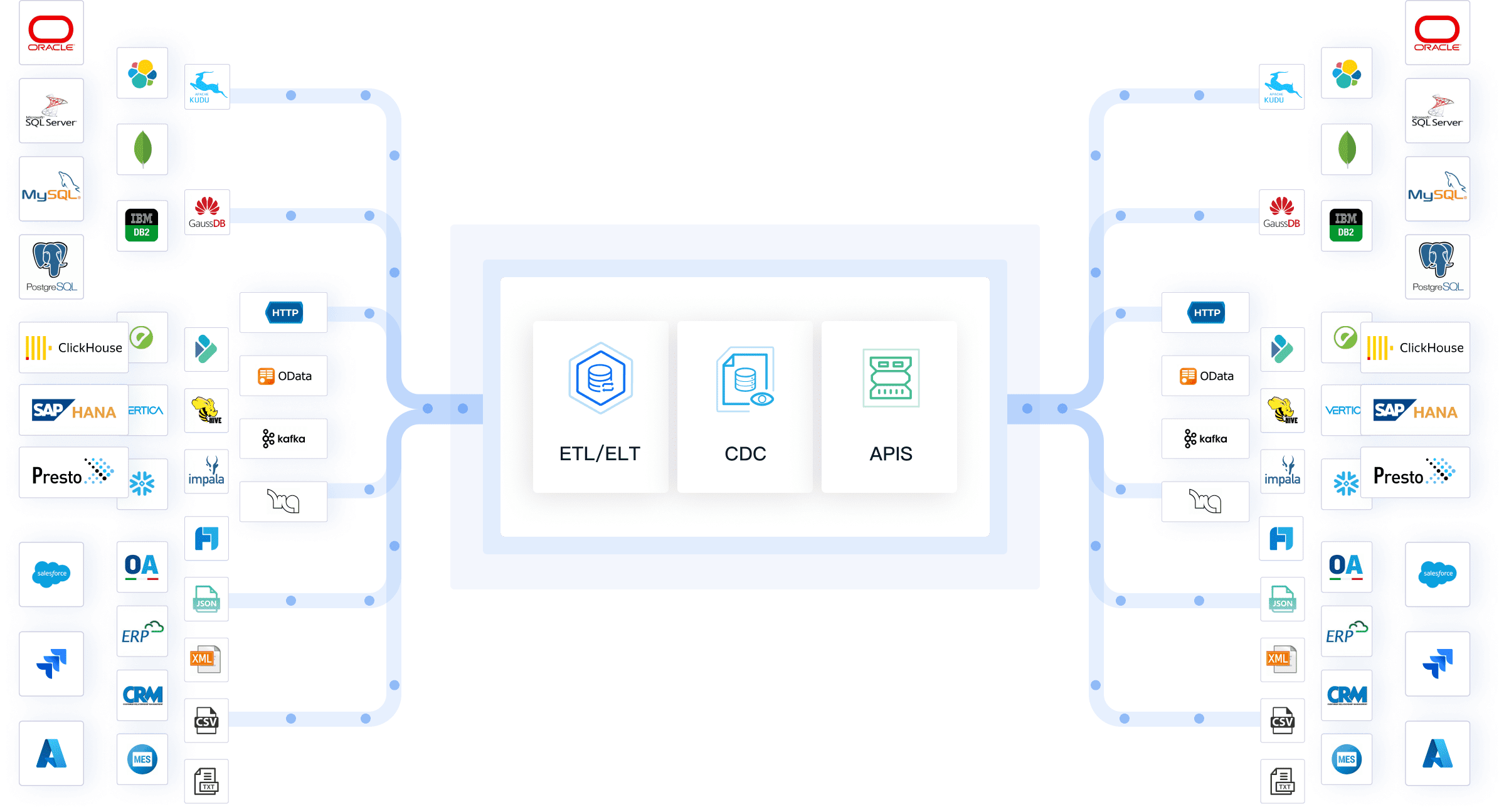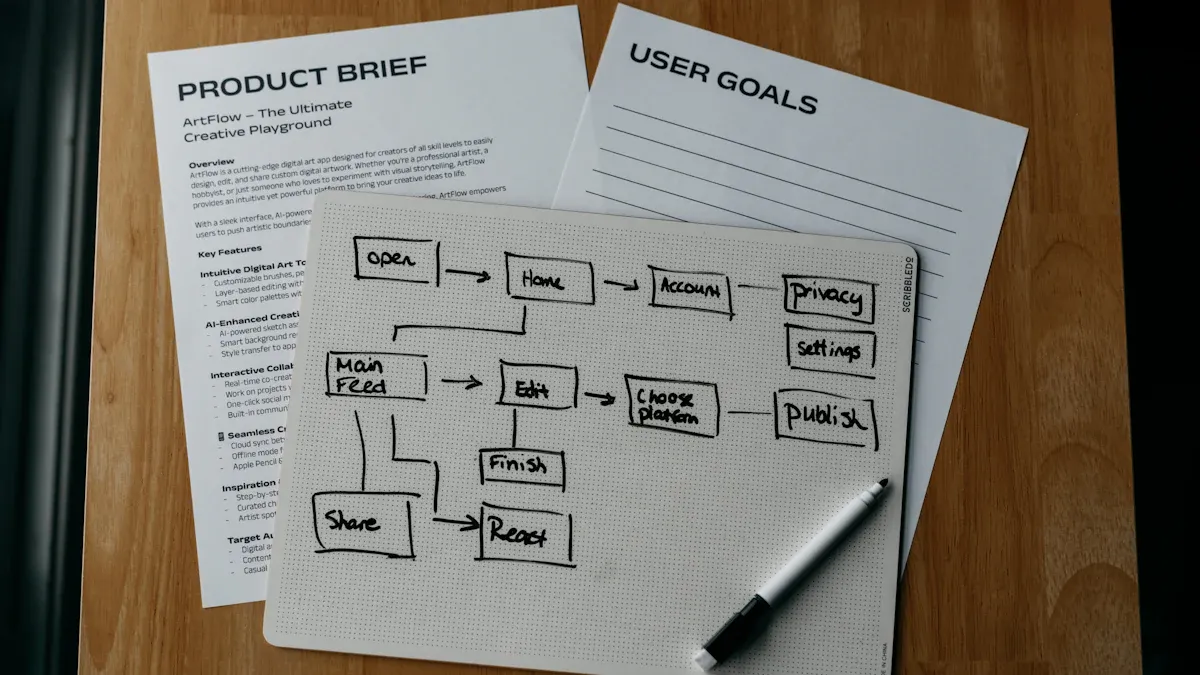Master data management tools help you create a single, trusted source for business data. Many organizations struggle with data silos and inconsistent records, but only 14% use dedicated master data management solutions to solve these problems. You often face issues such as fragmented data, poor quality, and complex integration. The table below shows how these tools improve data quality in large organizations:
| Benefit | Description |
|---|---|
| Data consistency and accuracy | MDM ensures that all data is consistent, standardized, and accurate, eliminating discrepancies. |
| Improved decision-making | Reliable and up-to-date data enables informed decisions quickly and confidently. |
| Streamlined processes | MDM eliminates duplicate data entry and reduces manual errors, increasing operational efficiency. |
FineDataLink offers a modern platform that addresses these challenges with real-time data integration and high-quality management.
Master Data Management Tools Overview

What is master data management
Master data management gives you control over the most important data in your organization. You use it to create a single source of truth for business-critical information, such as customer profiles, product details, and supplier records. This approach helps you eliminate duplicate entries and inconsistent formats. You manage several types of data, including metadata, reference data, master data, unstructured data, and transactional data.
Master data management combines several core principles and components to ensure your data remains accurate and reliable.
| Principle/Component | Description |
|---|---|
| Data Quality | Ensures accuracy, completeness, consistency, and timeliness of data for informed decision-making. |
| Data Governance | Establishes policies and standards for data management and usage across the organization. |
| Data Integration | Combines data from different sources to provide a unified view and eliminate redundancies. |
| Single Source of Truth | Creates a reliable and authoritative reference for critical data entities, reducing discrepancies. |
| Data Security | Protects data privacy and ensures appropriate access controls are in place. |
| Data Lifecycle Management | Manages data from creation to disposal, ensuring its relevance and compliance throughout its life. |
You can apply master data management across industries. In retail, you unify product catalogs and customer profiles. In finance, you capture precise customer identities and meet regulatory requirements. In healthcare, you manage patient records and coordinate care.
Why master data management matters
Master data management matters because it directly impacts your business operations and decision-making. When you rely on accurate and consistent data, you avoid costly mistakes and improve efficiency. Poor master data management leads to inaccurate reporting, operational delays, and increased risks.
| Impact Type | Description |
|---|---|
| Inaccurate Reporting | Leads to poor decision-making and misallocation of resources. |
| Poor Customer Experiences | Results in customer confusion and dissatisfaction. |
| Operational Inefficiencies | Causes delays and inefficiencies in business processes. |
| Increased Risks | Heightens operational risks and compliance issues. |
| Resource Misallocation | Results in financial losses and reduced profitability. |
You benefit from master data management by centralizing customer data, enhancing data quality, and gaining a complete view of your customers. This approach supports better communication, improved customer experience, and smarter business decisions. You also reduce risk and streamline your processes. Master data management tools help you achieve these goals by providing frameworks for data quality checks, data matching, and governance.

Master Data Management Tools and Features
Key functions of master data management tools
You rely on master data management tools to organize, govern, and synchronize your most important business data. These tools support your data management strategy by providing essential functions that help you maintain control over product master data management and customer master data management. You use these tools to consolidate information, manage workflows, and ensure data quality across your organization.
| Platform | Essential Functions |
|---|---|
| SAP Master Data Governance | Consolidates and centrally governs master data, supports all master data domains, and includes workflow management. |
| Semarchy xDM | Utilizes machine learning for stewardship, advanced matching, and integrates any data source via APIs. |
| Stibo Systems Multidomain MDM | Connects, governs, enriches, and syndicates data across multiple domains for accuracy and visibility. |
| Syniti Master Data Management | Creates a single point of reference for master data and monitors processes against SLAs. |
| Tamr Unify | Powers analytic insights and enhances data operations through machine learning for data consolidation. |
| TIBCO EBX | Manages workflow, data quality, and provides self-service for data governance. |
Master data management tools deliver several core capabilities:
- Data governance
- Data quality
- Integration
- Workflow management
- Data modeling
- Data matching
- Data stewardship
- Hierarchy management
You use these functions to create a unified view of your business data, reduce duplication, and improve accuracy. Master data management tools help you streamline processes and support enterprise master data management across departments.
Data integration and synchronization in master data management tools
Master data management tools play a critical role in integrating and synchronizing data from multiple sources. You need these tools to connect systems, harmonize formats, and ensure that updates reach every part of your organization. Product master data management depends on real-time data integration to keep inventory, pricing, and supplier information consistent.
Many master data management tools use advanced technologies for real-time synchronization. You see platforms like Apache Kafka, Oracle GoldenGate, and AWS DMS handling high-volume data feeds and replication tasks. These tools automate conflict resolution, push real-time updates, and align data formats with business rules.
- Automated data conflict resolution identifies discrepancies and reconciles records.
- Real-time data updates monitor changes and push updates across platforms.
- Intelligent cross-platform integration harmonizes different formats.
- Predictive synchronization analyzes patterns to anticipate update needs.
You benefit from reduced latency and improved business agility. Master data management tools eliminate inefficiencies, minimize manual interventions, and ensure that changes made in one system update all relevant systems. This approach supports digital transformation and enhances your data management system.
| Benefit | Description |
|---|---|
| Automation | Automates the process of updating master data, reducing manual intervention and delays. |
| Improved Data Quality | Ensures consistent application of business rules, leading to higher data accuracy and reliability. |
| Enhanced Business Agility | Allows organizations to adapt quickly to changes, streamlining workflows and decision-making. |

Data governance and quality in master data management tools
You depend on master data management tools to enforce data governance and maintain high data quality. These tools integrate frameworks that help you set policies, monitor compliance, and manage data stewardship. You see platforms like SAP Data Governance and IBM Data Governance providing prebuilt models, rules, and workflows for managing master data.
| Framework | Description |
|---|---|
| SAP Data Governance | Consolidates and manages master data with prebuilt models, rules, and workflows. |
| IBM Data Governance | Utilizes machine learning to curate data assets and includes an integrated data catalog. |
| Oracle Enterprise Data Management | Incorporates governance workflows for data stewards and custodians to maintain data quality. |
| SAP Master Data Governance | Specifically designed for governing and managing master data with built-in quality management tools. |
Master data management tools use data cleansing techniques such as deduplication, validation, and correction. You see continuous monitoring to track changes and maintain integrity. These tools propagate updates across operational systems, ensuring consistency and reliability.
- Data cleansing removes duplicates and corrects errors.
- Continuous monitoring tracks changes in real time.
- Integration with operational systems propagates updates.
You gain up-to-date information for decision-making, enhance operational efficiency, and support strategic planning with relevant data. Master data management tools help you maintain a strong foundation for enterprise master data management.
FineDataLink platform advantages for master data management tools
After understanding the core features of master data management tools, you can see how FineDataLink stands out as a modern solution. FineDataLink supports over 100 data sources, addressing data silos and complex formats. You use real-time synchronization to keep customer master data management and product master data management accurate and up-to-date.
| Advantage | Description |
|---|---|
| Supports multiple data sources | FineDataLink can integrate data from various sources, addressing data silos and complex formats. |
| Real-time synchronization | Ensures that customer information is always accurate and up-to-date across systems. |
| Seamless integration and transformation | Facilitates the integration and transformation of data across diverse systems. |
| AI and ML optimization | Incorporates advanced technologies to enhance data integration tasks. |
| Scalable cloud technology | Leverages cloud services for scalable integration solutions. |
FineDataLink offers several features that address common enterprise pain points:
- Real-time data synchronization eliminates data silos and keeps all sources updated.
- Flexible data processing allows tailored handling, reducing manual effort.
- Automated workflows streamline processes and minimize manual intervention.
- Low-code solutions empower you to create integrations quickly, even without coding expertise.
- Incremental log monitoring improves update efficiency and reduces latency.
- Global correlation analysis connects cloud and on-premise data for comprehensive decision-making.
You use FineDataLink to build efficient data layers for business intelligence, support digital transformation, and enhance your overall data management strategy. The platform helps you achieve scalable, automated, and high-quality master data management.

Benefits of Master Data Management Tools

Improved data quality
You rely on master data management software to improve data quality across your organization. When you use master data management tools, you eliminate duplicate records and reduce errors. You see measurable improvements in your business outcomes. For example, a retailer reduced duplicate customer records from 12% to 0.1%, which increased customer satisfaction scores by 34%. Another company achieved a 96% reduction in data errors and reached a 98% data trust level. You can expect up to $8.7 million in annual cost savings and a 342% ROI within 18 months after implementing master data management software.
- You eliminate data duplication by consolidating records.
- You automate data cleansing, which reduces manual tasks.
- You foster trusted, accessible, and actionable data for your teams.
Master data management software provides a single source of truth, which enhances the reliability of your business data. You can trust your data for reporting, analytics, and decision-making.
Operational efficiency
Master data management software helps you streamline business processes and improve operational efficiency. You use master data management tools to centralize data management, which minimizes redundant efforts across departments. You reduce manual workloads and focus on core business activities.
| Benefit | Impact on Operational Efficiency |
|---|---|
| Single Source of Truth | Reduces time and effort in managing and reconciling data |
| Access to Accurate Information | Enables employees to access up-to-date information without discrepancies |
| Improved Business Processes | Enhances efficiency in customer service, supply chain, and reporting |
You see streamlined operations that lead to reduced operational costs. A business solutions provider improved order processing efficiency by 34% by linking customer orders to inventory records. You respond quickly to market changes and adapt your business processes with agility. Master data management software ensures consistency by providing a centralized platform for data management.
Regulatory compliance
You need master data management software to maintain compliance with regulations such as GDPR, HIPAA, and CCPA. Master data management tools help you manage data governance, data quality, and security, which are essential for regulatory compliance. You ensure the accuracy, consistency, and integrity of personal data, which is critical for GDPR compliance.
- You use a centralized system for managing customer master data, which supports requirements like the right to erasure, rectification, and access.
- You avoid fragmented data, which increases the risk of inaccuracies and makes compliance difficult.
- You maintain compliant processes by managing data effectively across your organization.
Master data management software helps you mitigate regulatory and security risks, ensuring that you meet industry standards and protect sensitive information.
Better decision-making
Master data management software gives you access to accurate and consistent data, which improves your decision-making. You use master data management tools to establish a single, authoritative source for master data. You eliminate duplicates and standardize formats, which leads to reliable analysis and reporting.
| Evidence Description | Contribution to Decision-Making |
|---|---|
| MDM establishes a single, authoritative source for master data. | Ensures data consistency, eliminating duplicates and standardizing formats, leading to reliable analysis and reporting. |
| Provides a holistic view of master data. | Enables organizations to analyze trends and identify patterns, resulting in valuable insights for informed decisions. |
| Cleans, enriches, and standardizes data before loading into the data lake. | Ensures data is accurate, complete, and consistent, enhancing the quality of insights derived from data. |
| Aligns business processes with accurate master data. | Improves decision-making and boosts operational efficiency, allowing for better value from data-driven insights. |
You see up to a 20% increase in data accuracy and a 15% improvement in organizational efficiency. You align your business processes with accurate master data, which boosts operational efficiency and helps you derive greater value from data-driven insights.
Enhanced customer experience
Master data management software improves your customer experience by providing individualized service and anticipating customer requirements. You use master data management tools to develop a comprehensive view of your customers, which helps you manage relationships and deliver better service.
- You offer individualized service that meets customer preferences.
- You anticipate customer requirements and respond proactively.
- You deliver customized solutions that enhance overall satisfaction.
You improve data accuracy and enhance collaboration across teams. You personalize customer experiences and comply with data protection regulations. You uncover new revenue opportunities and grow your market share by understanding customer needs and trends. You expand your customer footprint through tailored offerings and eliminate redundant customer data for unique records.
Use cases with FineDataLink
You can use FineDataLink to address common challenges in enterprise master data management, product master data management, and customer master data management. FineDataLink enables you to integrate data from multiple sources, including relational databases and cloud storage. You guarantee data consistency and reliability, which reduces errors from disparate datasets.
- FineDataLink automates data synchronization, ensuring that business intelligence reports are always current and accurate.
- You transform data during integration, which ensures it is in the correct format for analysis.
- You build efficient data warehouses and streamline migration of enterprise data, reducing computational burdens.
- You use API integration to cut interface development time and enhance operational efficiency.
- You benefit from enhanced data connectivity, which enables seamless data transmission between SaaS applications and cloud environments.
- You increase development efficiency with drag-and-drop operation, especially in large projects.
Marvel Kazakhstan partnered with FanRuan to leverage FineDataLink for real-time data integration. This collaboration allows organizations to transform raw data into actionable insights and supports faster, smarter decision-making across various sectors. FineDataLink has enabled the completion of 1000 data projects, showcasing reliability and effectiveness in enterprise master data management.

Master data management helps you build a reliable foundation for business intelligence and operational success. FineDataLink enables you to overcome data silos and improve data quality. To evaluate and implement an effective solution, you should:
- Establish data governance processes.
- Define your business case and expected benefits.
- Create a strategy and roadmap.
- Set metrics to measure progress.
- Select technology that fits your needs.
- Engage stakeholders.
- Provide user training and support.
- Monitor and maintain your system.

Continue Reading About Master Data Management Tools
Enterprise Data Integration: A Comprehensive Guide
What is enterprise data and why does it matter for organizations
Understanding Enterprise Data Centers in 2025
Enterprise Data Analytics Explained for Modern Businesses
FAQ

The Author
Howard
Data Management Engineer & Data Research Expert at FanRuan
Related Articles

What is a data management platform in 2025
A data management platform in 2025 centralizes, organizes, and activates business data, enabling smarter decisions and real-time insights across industries.
Howard
Dec 22, 2025

Top 10 Database Management Tools for 2025
See the top 10 database management tools for 2025, comparing features, security, and scalability to help you choose the right solution for your business.
Howard
Dec 17, 2025

Best Data Lake Vendors For Enterprise Needs
Compare top data lake vendors for enterprise needs. See which platforms offer the best scalability, integration, and security for your business.
Howard
Dec 07, 2025



